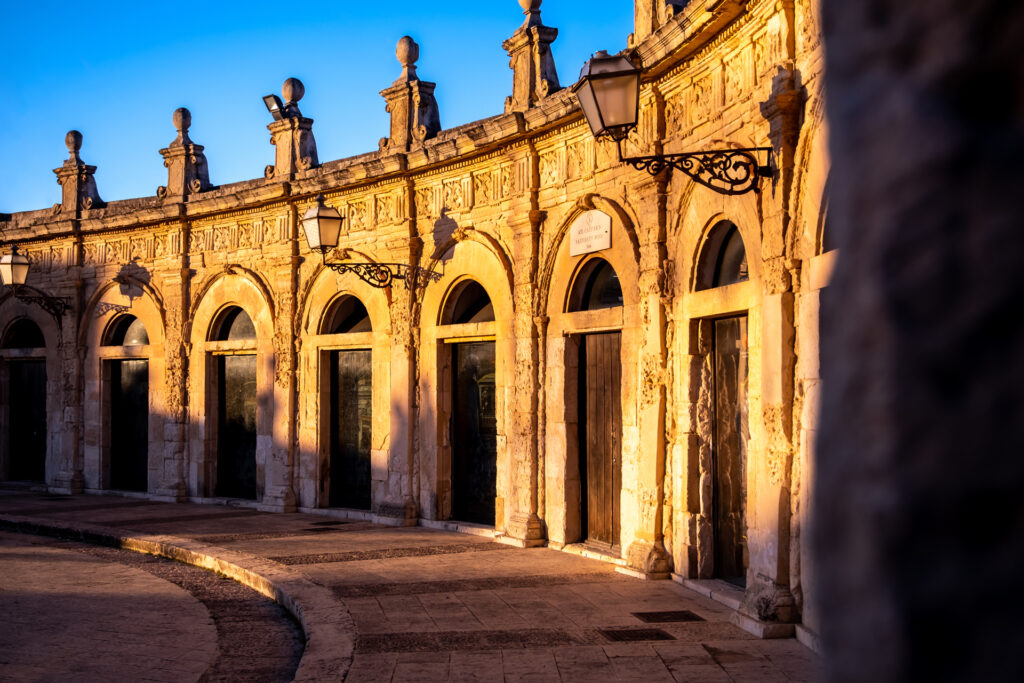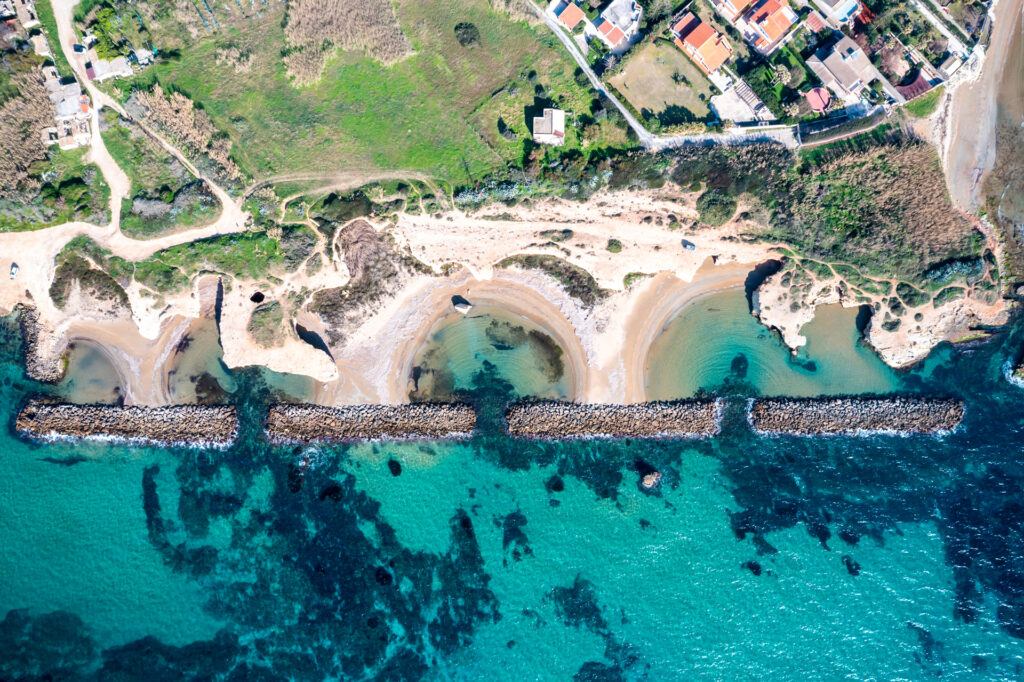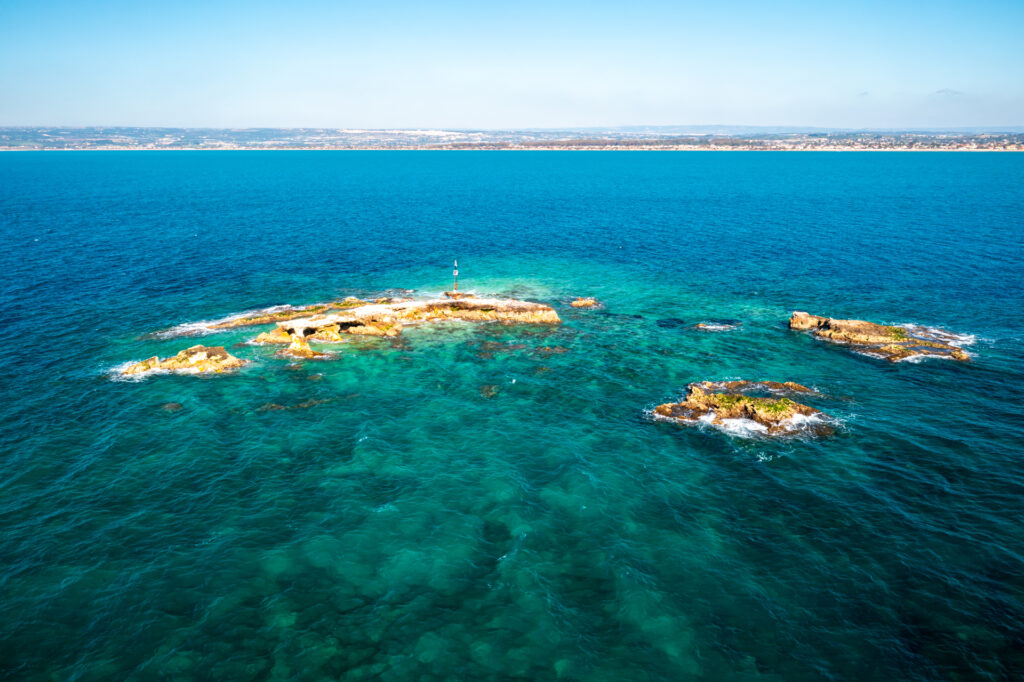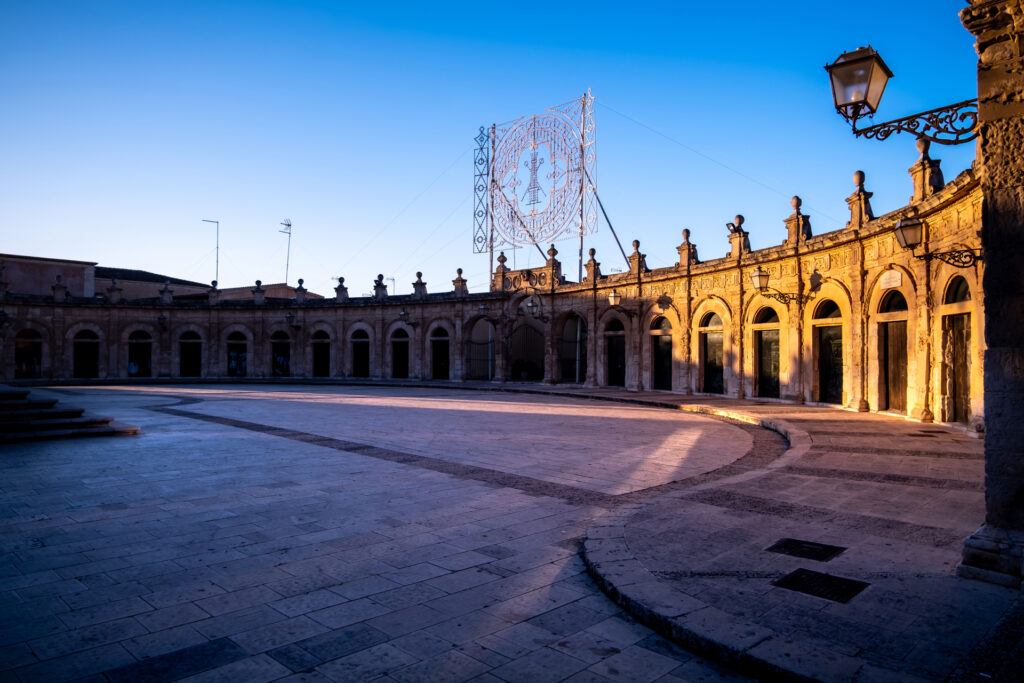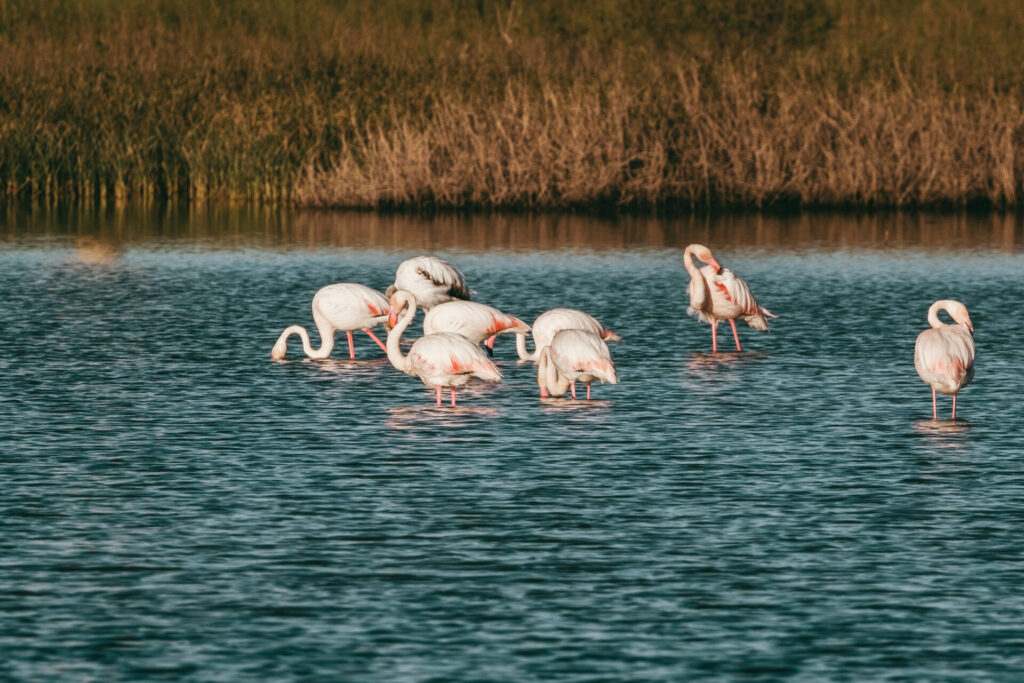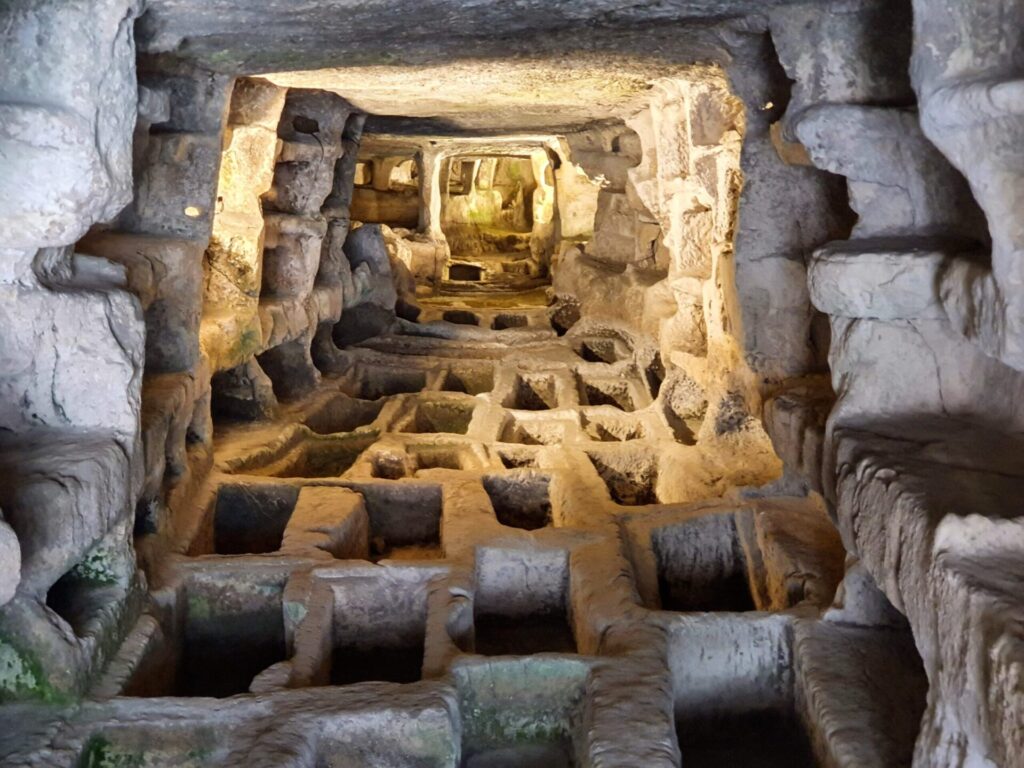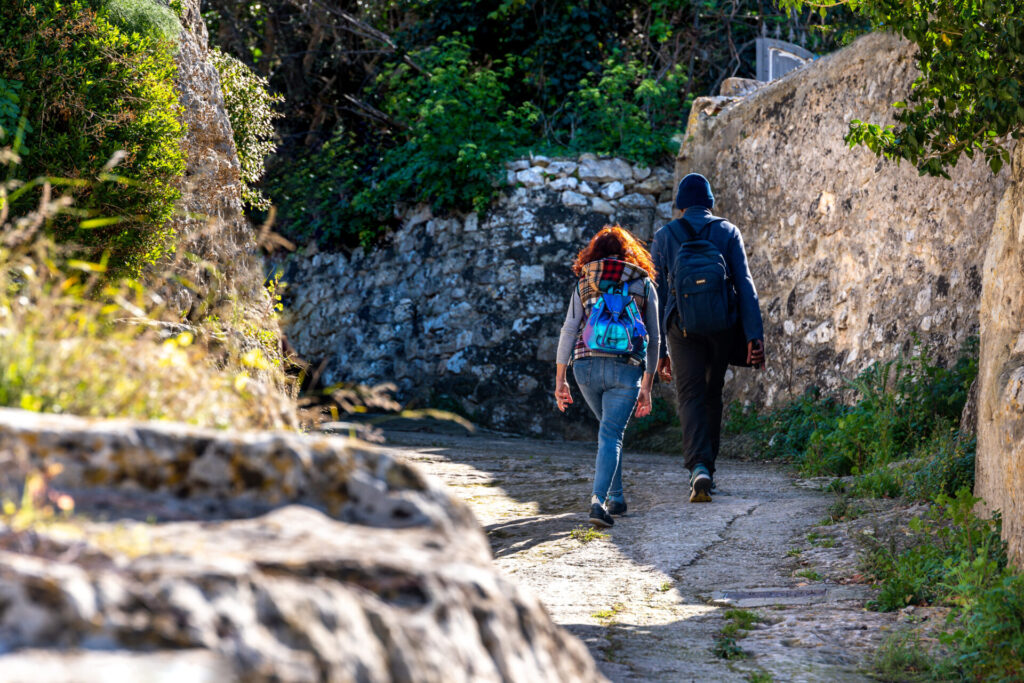Ispica
An eighteenth-century strip of land overlooking the Mediterranean.
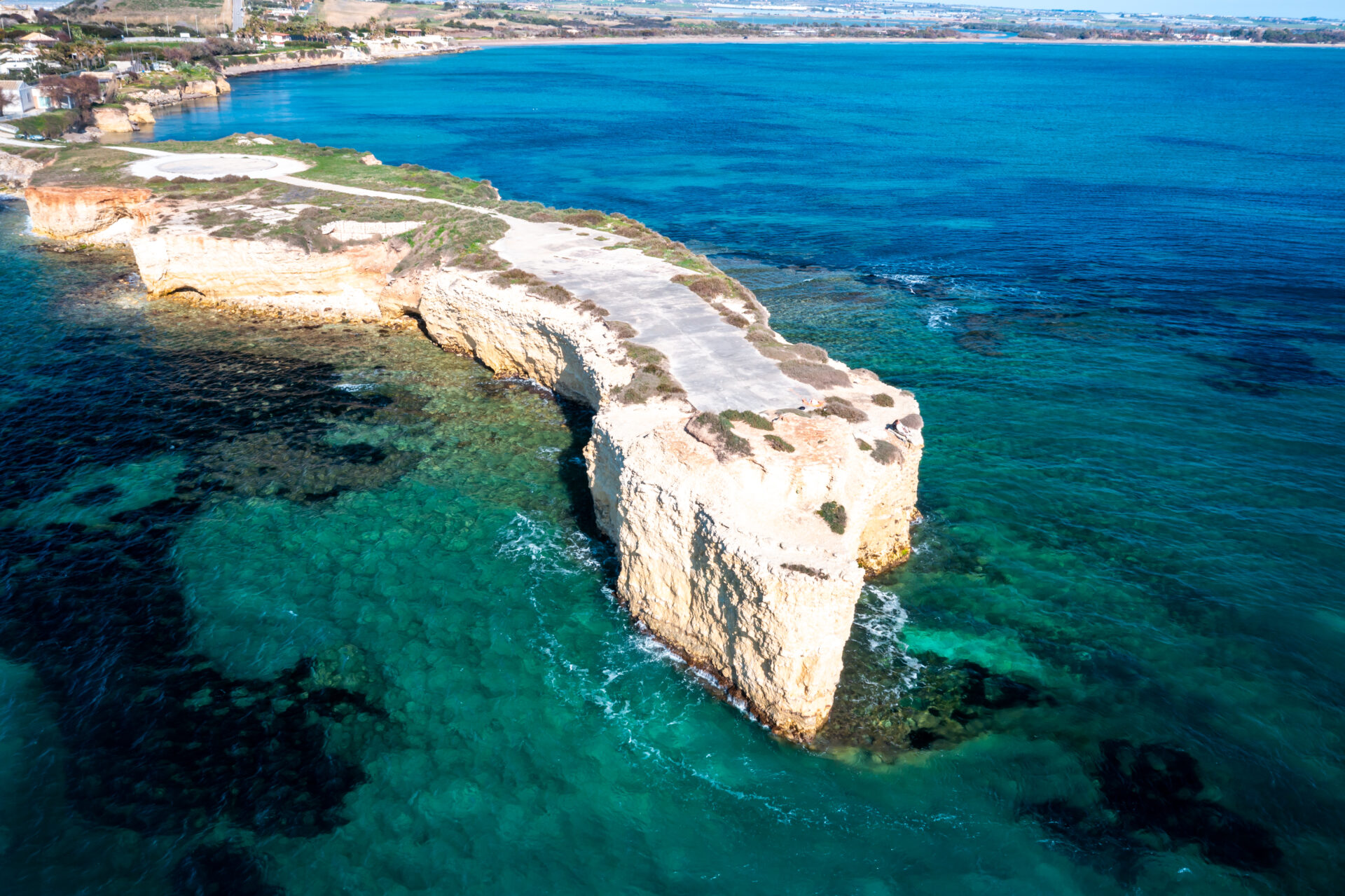
Ispica is a pretty town on the eastern edge of the province of Ragusa located on a hill, 7 km from the sea, known until 1935 as Spaccaforno.
The town has a regular urban structure with wide, straight streets.
The historic center preserves the most significant monuments: palazzo Bruno di Belmonte, among the most important Art Nouveau buildings in Sicily; the Basilica of Santa Maria Maggiore, a national monument for its frescoes by Olivio Sozzi and paintings by Vito D’ Anna, refined artists of Sicilian Baroque; the Sinatra loggia, unique of its kind in Sicily; the Basilica of the Annunziata, rich in valuable stucco work by Gianforma and important paintings from the 1500s, 1600s, and 1700s; and the sanctuary of Carmine, of 16th-century origin.
Within its territory falls the southern part of Cava Ispica, a 13-kilometer-long river valley that holds a remarkable variety of rock settlements (prehistoric villages and tombs, Christian catacombs, rock-cut dwellings) and is one of the most important archaeological areas in Sicily. Here are the remains of the ancient, once-rural city, predating the 1693 earthquake, and the Force Archaeological Park, the ancient Fortilizium where the lords of Spaccaforno resided.
The coastal strip of Ispica territory includes the renowned beaches of Santa Maria del Focallo, della Marza and Ciriga, known for the presence of characteristic stacks, and the naturalistic area of the Gorgo Salato, Bruno and Longarini marshes.
The town’s economy, based mainly on agriculture, boasts such excellent products as the IGP novella carrot of Ispica and sesame.
Among the most important events held in Ispica throughout the year are the rites of Holy Week, with the processions of Christ at the Column, on Holy Thursday, Christ with the Cross, on Good Friday, and ” L’ Encounter” between the Risen Christ and Our Lady of Sorrows, on Easter Sunday,
The city has been the set of major films such as Germi’s “Divorce Italian Style,” starring Marcello Mastroianni and Stefania Sandrelli, De Sica’s “Il Viaggio,” and the Taviani brothers’ “Kaos,” as well as the location of the TV dramas “Inspector Montalbano” and “Il Capo dei Capi” and the historical films based on Andrea Camilleri’s novels “The Horse’s Move,” “The Hunting Season” and “The Telephone Concession.”
Sea and Nature in Ispica: beaches and excursions
On the coast we find the seaside resorts of Santa Maria del Focallo, Marina Marza and Ciriga. On the long beach of Santa Maria del Focallo, which is popular with tourists and locals alike, the Blue Flag flies. The nearby Ciriga area is undoubtedly one of the most beautiful stretches of the Ragusa coast thanks to its rocky headlands, stunning coves and stacks.
Of considerable naturalistic interest are the Gorgo Salato, Bruno and Longarini marshes, where it is possible to admire, in the course of their migrations between Europe and Africa, numerous species of birds including Black-winged Stilts, Garganeys and Little Egrets and Pink Flamingoes
What to see in Ispica
Piazza dell' Unità d' Italia and church of San Bartolomeo
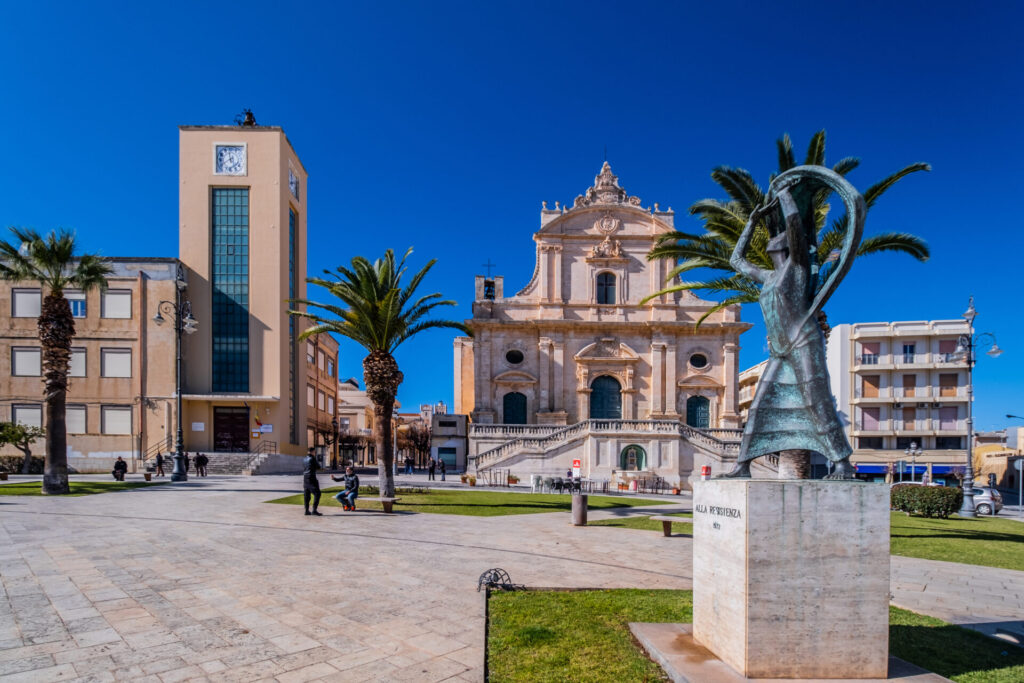
Piazza dell’ Unità d’ Italia is the largest square in the town. The two main buildings facing it are the Palazzo Bruno, an important example of early-1900s architecture in the eclectic style designed by architect Lanzerotti of Catania, and the Church of St. Bartholomew, which towers above a high flight of steps. The elegant church shows late Baroque and neoclassical elements that testify to different construction phases. Its interior houses, among numerous works of art, an interesting wooden crucifix, a valuable mixed marble altar, and the mausoleum of Giovanni Statella, the latter dating from the 1600s, from the ancient church located in the quarry.
Basilica of Santa Maria Maggiore and Loggiato del Sinatra

The basilica of Santa Maria and the Sinatra loggia are among the most interesting monuments in Ispica.
The square in front of the church is enclosed by an elegant 18th-century loggia known as the Sinatra, from the surname of the Netino architect who designed it, which embraces the church’s elevation, the only one of its kind in Sicily.
The basilica, with its elegant neo-Renaissance façade, houses inside, designed by architect Gagliardi of Syracuse, one of the most important late Baroque pictorial cycles in the entire Hyblaean area, signed by the great painter Olivio Sozzi, whose body is kept in the basilica’s “House of Wax.” Also noteworthy are the 18th-century stuccoes decorating the church, a canvas by Vito d’Anna having as its subject a “Sacred Conversation,” and the simulacrum of Christ Scourged at the Pillar, an object of great veneration during Holy Week.
Basilica della Santissima Annunziata
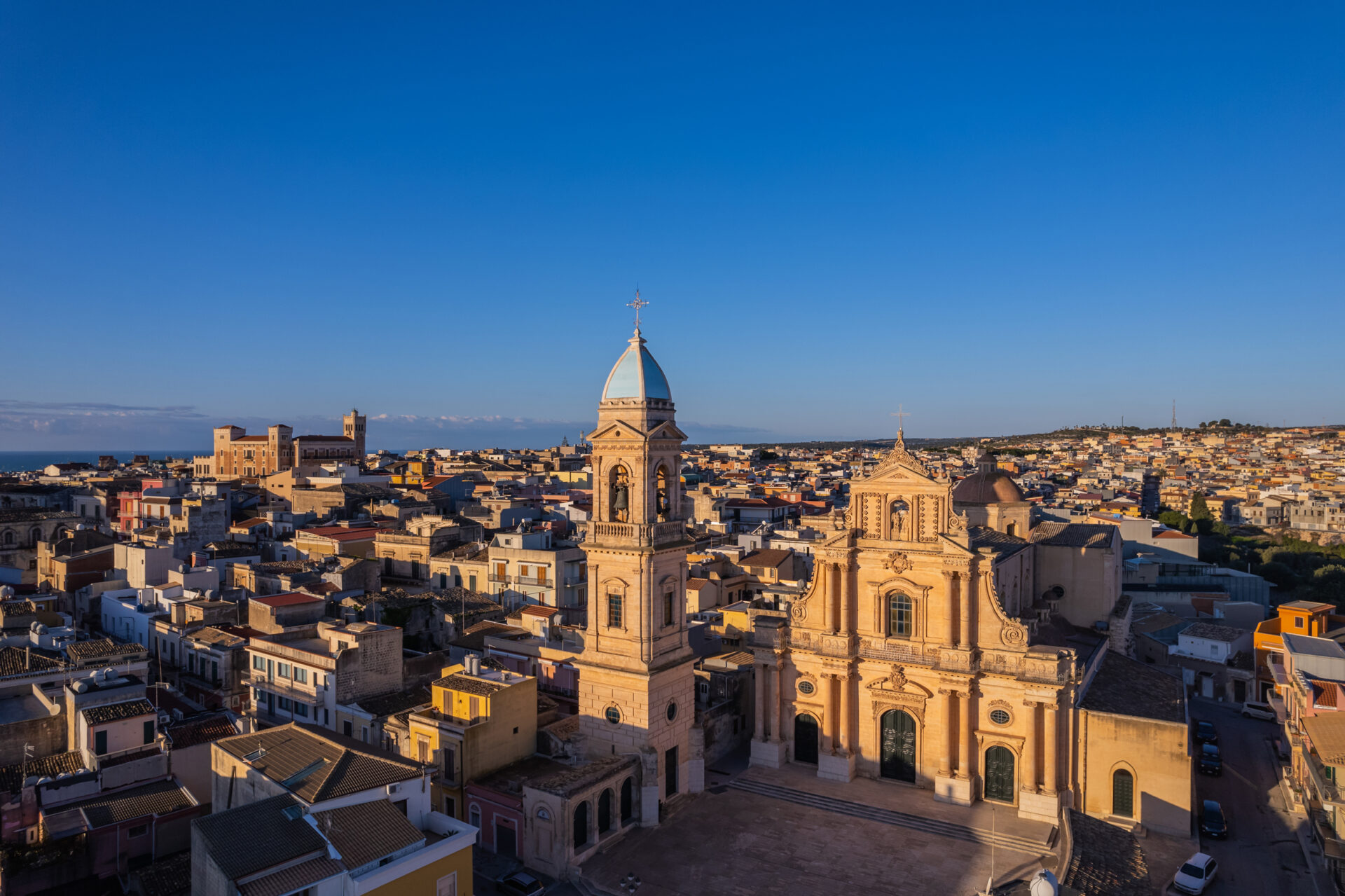
An elegant loggia precedes the scenic facade of SS. Annunziata, rebuilt in the nineteenth century according to the design of the chief master Carlo di Gregorio. The interior of the basilica is a triumph of Baroque and Neoclassical stuccoes, signed by the Gianforma, created in the mid-1800s and early 1800s. Also of notable artistic interest are the 16th-century panel painting of the Annunciation, by an unknown author; a canvas depicting St. Andrew Avellino, in the Caravaggio style; a fine Annunciation from the 1700s, attributed to the Palermo-born Vito d’Anna; and the simulacrum of Christ with the Cross, the protagonist of the Holy Week rites in Ispica.
Palazzo Bruno di Belmonte
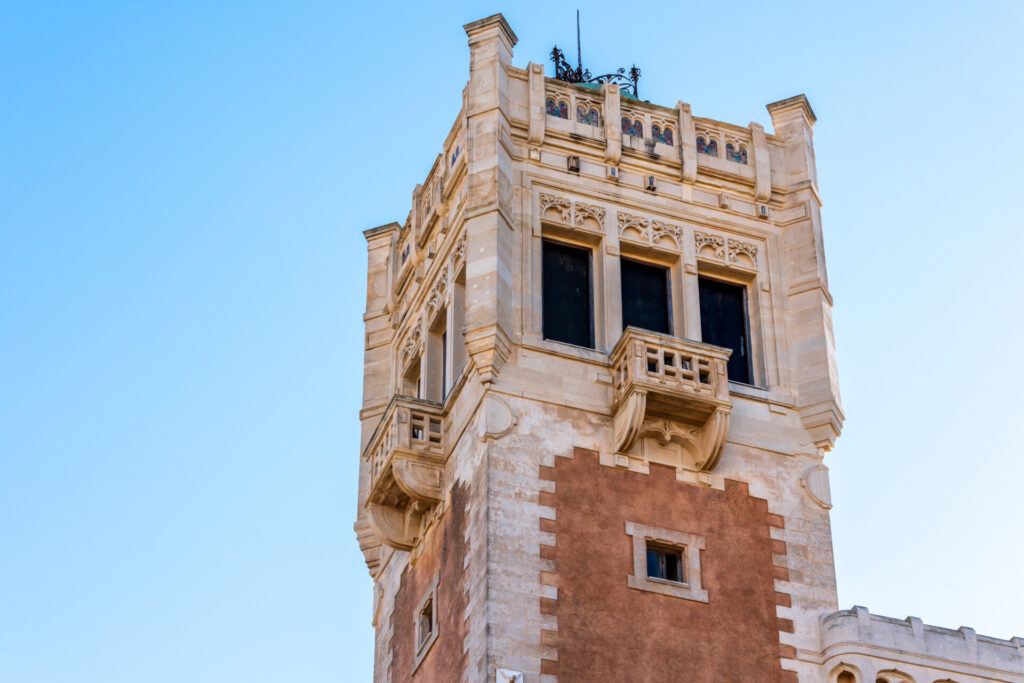
The palace of the Bruno di Belmonte family is one of the most important Art Nouveau buildings in Sicily. The structure, as mighty as a medieval castle, is lightened by Art Nouveau decorations and friezes thanks to the architectural insights of Ernesto Basile, who designed it in the early 1900s. The corner towers, wrought-iron grilles, and colorful majolica tiles on the elevation are the most interesting elements. The palace has been, since the 1970s, the prestigious seat of Ispica’s town hall.
Chiesa di Sant’Antonio Abate
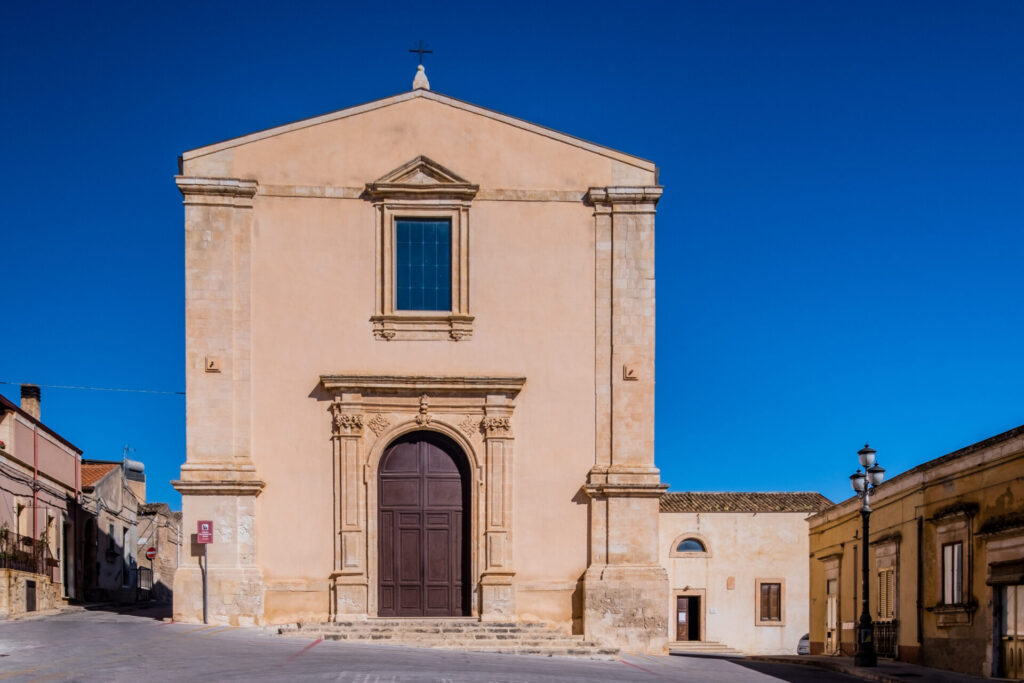
Chiesa di Sant’Antonio built beginning in the 1500s, is a small, simple-looking, single-nave house of worship. Inside it holds numerous works of art including two canvases depicting Apostles Peter and Paul, a significant wooden Crucifix, and a holy water font and baptismal font made before the 1693 earthquake.
Chiesa e Convento di Santa Maria del Gesù
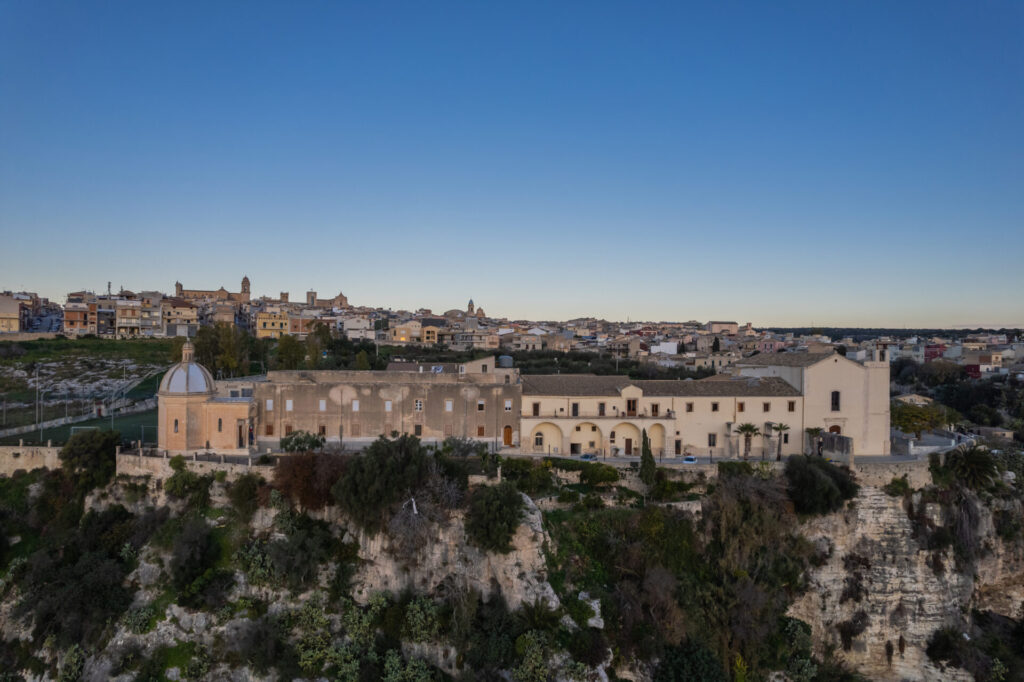
The Jesus monumental complex overlooks the Hispanic lowlands and enjoys exceptional views of the countryside and the sea. The Chiesa and Convento, built beginning in the 1500s, offer typical architectural elements of Franciscan structures. The church holds a valuable wooden crucifix by Fra Innocenzo da Petralia and splendid mixed marble altars from the Baroque period.
Cava d'Ispica and Parco Forza
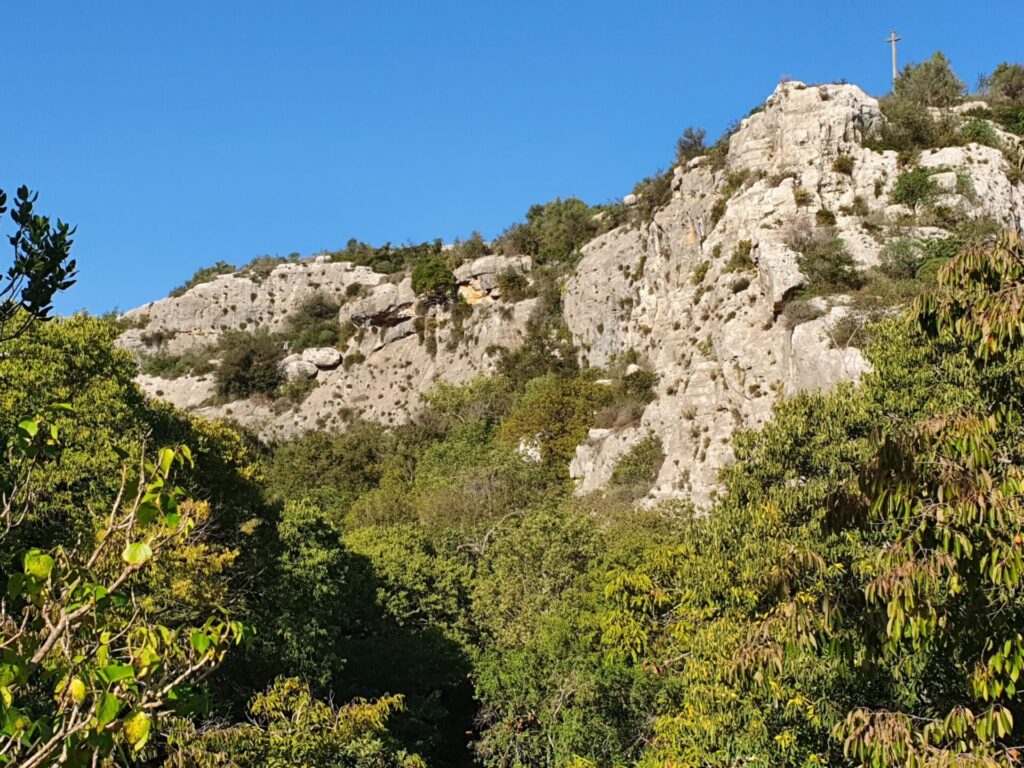
In the southern part of Cava d’Ispica are some ancient tombs from prehistoric times, late Byzantine and Roman cemetery areas, several cave churches, including that of Santa Maria della Cava, and artificial caves used as oil mills, the cave of the Tannery and the rock dwellings of the ancient city, now often used as warehouses by the inhabitants of Ispica. In the heart of the ancient settlement is the Force Archaeological Park, inside which is the “Hundred Stairs,” a tunnel dug into the rock for water supply, numerous artificial caves used for various purposes, including the so-called Stable, and the remains of the Marchionale Palace and the ancient church of the Annunziata.
Upcoming events
Find out about upcoming events in Ispica: religious festivals, exhibitions, festivals, concerts, theater performances, food and wine events, and sporting events

